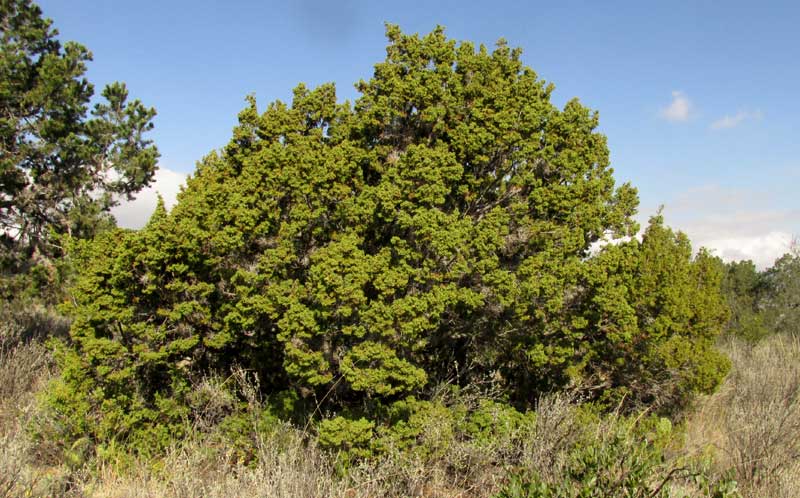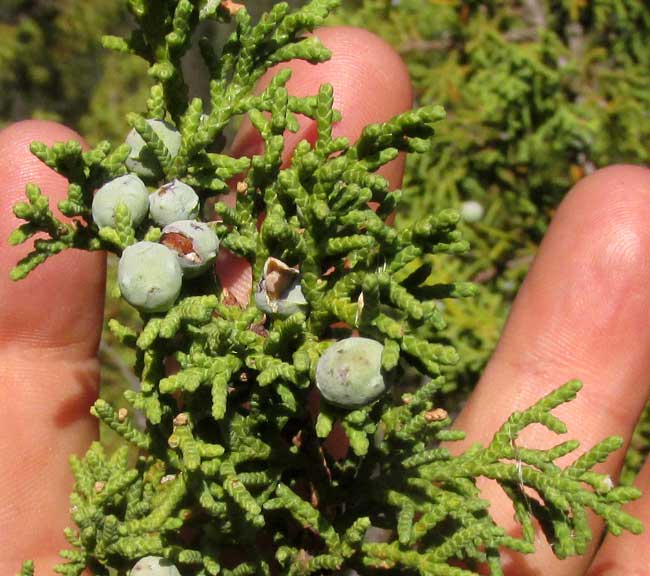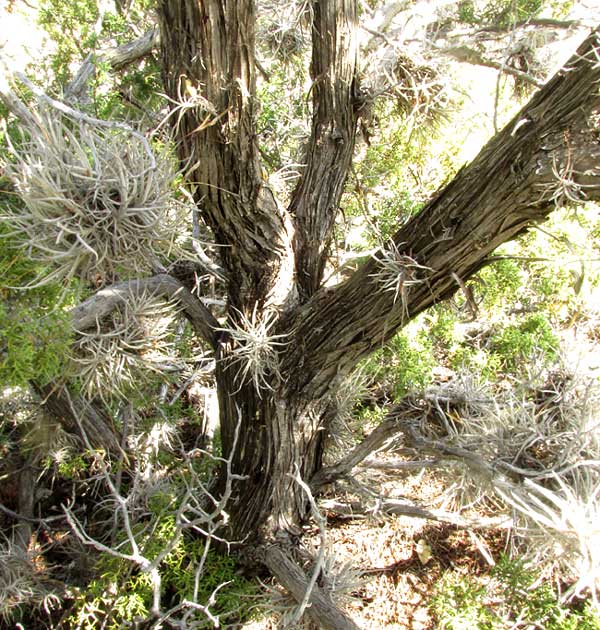Excerpts from Jim Conrad's
Naturalist Newsletter
from the June 14, 2018 Newsletter with notes from a camping trip in early April in the mountains east of Saltillo, Coahuila, MÉXICO
ASHE JUNIPER
A little over two months ago, on April 5th, in the mountains east of Saltillo, Coahuila, northeastern Mexico, I started out hiking on a valley floor, and climbed a small limestone mountain that was grassy and scrubby at its base, but forested on top. At the top, at ±7000 feet in elevation (2100m), the forest was composed nearly entirely of widely spaced, low growing, somewhat gnarly pines and junipers. Below, you can see one of the junipers, with a Mexican Pinyon Pine at the back, left:

Mostly the junipers bore few or none of their berry-like cones, but on the tree in the picture two or three branches were thick with them, as shown below:

By "berry-like cones" is meant that these are real cones, as to be expected among the gymnosperms. Technically, a cone is an elongated collection of flowers or fruits that are borne beneath scales, the scales attached to an axis. Among pines, the scales make woody cones, but among the junipers the scales are leathery and fuse together to create a cone that looks like a berry.
On some trees, branches were loaded with what's shown below:

Junipers produce unisexual flowers, and these are cones of male flowers. Some of the cones' scales are pulling away from the cone revealing pollen-producing stamens below them.
Nine juniper species -- nine species of the genus Juniperus -- are listed for the state of Coahuila, and all of them produce scale-like leaves and berry-like cones somewhat similar to these, so I was worried about identifying these junipers to species level. However, when I pulled apart the tree's outer branches and saw what the trunk looked like, I thought the identification process might not be so hard after all. below, you can see what I saw:

First, I was surprised that in tree's interior hosted such a nice population of bromeliads -- probably because the outer branches created a more humid, protected environment inside. For identification purposes what's so helpful is seeing that this tree's trunks produce bark that peels off in long, slender strips. One commonly occurring juniper in northern Mexico is the Alligator-bark Juniper, with bark breaking into numerous small blocks, so obviously this isn't that species.
In fact, that unusual bark is exactly the kind on the super-abundant junipers we lived among on the Edwards Plateau up in Texas. Those were Ashe Junipers, called "Cedars" by the locals, and our Ashe Juniper page has lots of pictures and information about the controversial species at www.backyardnature.net/n/w/ashe-jun.htm
In fact, it turns out that our location atop that mountain in southeastern Coahuila state was exactly at the southernmost point of distribution of the Ashe Juniper, JUNIPERUS ASHEI, and these Mexican junipers were indeed that species. The cones' bluish color and silvery (glaucous) bloom also are important field marks.
I wouldn't have minded meeting a juniper species new to me, but it's also nice to meet this old friend at its southernmost home.